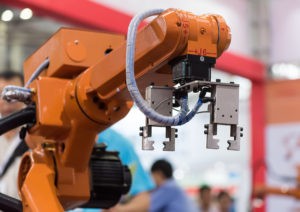Take Your Manufacturing Plant into the Future with Robotics and Automation

Robotics are the wave of the future in today’s industrial world. Manufacturers can automate many processes and supply around-the-clock workforces with the help of robotics. And introducing robotics into manufacturing processes has many additional benefits. These machines can improve safety and take over mundane tasks, leaving manufacturing professionals free to do more in-depth work. In addition to these advantages, there are some downsides to robotic automation, so savvy manufacturers will need to evaluate potential uses on a case-by-case basis.
Shrinking labor costs
Labor cost reduction increases profit, which is always an imperative business goal. Using robotics to automate certain processes could help reduce labor expenses. Continuous, 24/7 tasks are one of the first areas many look to when considering automation. Since robots don’t require breaks or sleep — or need to work in shifts — robotic equipment can increase production in areas where workers are doing mundane, repetitive tasks. While not necessarily meant to replace these workers, it frees them up to use their skills in other areas that involve more complex activities or human supervision.
When plant leaders are responsible for fewer employees performing busywork — in an industry in which nearly every business requires tasks to be performed over and over each day — more workers are available to improve productivity in other areas. Additionally, when robotics take over tasks like this, manufacturing teams can improve safety records. Automation can speed up many manufacturing processes and make life easier for industry experts while increasing company bottom lines. The potential also exists for a decrease in labor in the future due to automating manufacturing processes, preventing downtime, and making up for a lack of available skilled workers.
Getting started with automation
 Plant leaders need to take a few things into consideration when planning where to implement robotic automation, according to the “A Guide to Making Robots Work in Your Factory” article. When buying a robotic arm, for example, consider the other factors necessary for it to function properly. This may include different tools for the end of the arm, such as a variety of grippers. Safety sensors may also be required, and the equipment will need to be attached to the floor or work area where it will operate.
Plant leaders need to take a few things into consideration when planning where to implement robotic automation, according to the “A Guide to Making Robots Work in Your Factory” article. When buying a robotic arm, for example, consider the other factors necessary for it to function properly. This may include different tools for the end of the arm, such as a variety of grippers. Safety sensors may also be required, and the equipment will need to be attached to the floor or work area where it will operate.
The software that comes with the robotic arm in the above example is most likely going to be very basic. Manufacturers may need to have it rewritten to work with company-specific commands. Therefore, manufacturers have much more to think about than simply purchasing the robotic equipment. A system integration process may be required as well.
Robotics and automation: Prepare now
One of the actions company leaders can take immediately is to begin developing strategies and goals for incorporating robotic automation. While some may not be using it to a huge degree now, chances are that’s going to change in the near future. That makes now the perfect time for manufacturers to consider reviewing how their manufacturing processes work and whether partial or full redesigns to include automation are feasible for boosting productivity. Simply introducing automation to current processes may not be the best answer for all as many may need to change their entire organizational designs accordingly.
Automation technology today is much more advanced than anything that has preceded it in the past. In fact, robotics and automation systems currently installed in many plants are becoming archaic and can pose safety issues. On the other hand, an organizational design that takes into consideration machine-human interactions or machine-machine processes means leading manufacturers can help employees focus on tasks that require more critical thinking. That’s why many manufacturers are putting their experts to use where they can use their reasoning skills — and leaving the machines to do the tedious work.
Robotics are all around us and their uses are increasing every day. Whether you’re ready to move your company into the future with robotics or are just beginning to consider automation possibilities, you can always count on the professionals at Global Electronic Services. Contact us for all your industrial electronic, servo motor, AC and DC motor, hydraulic, and pneumatic needs — and don’t forget to like and follow us on Facebook!